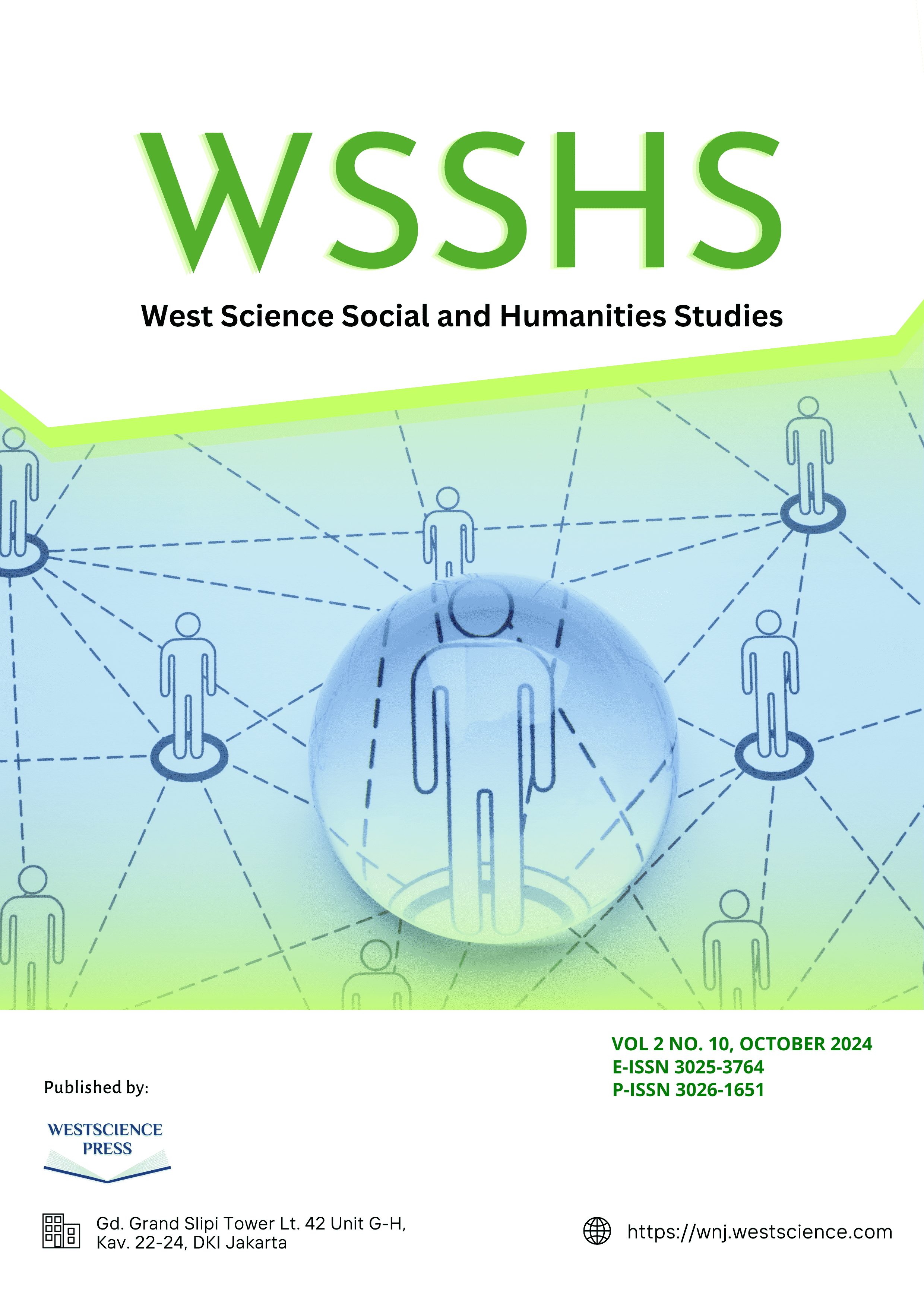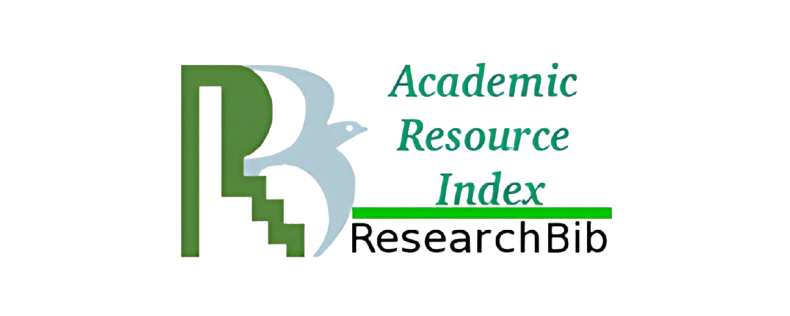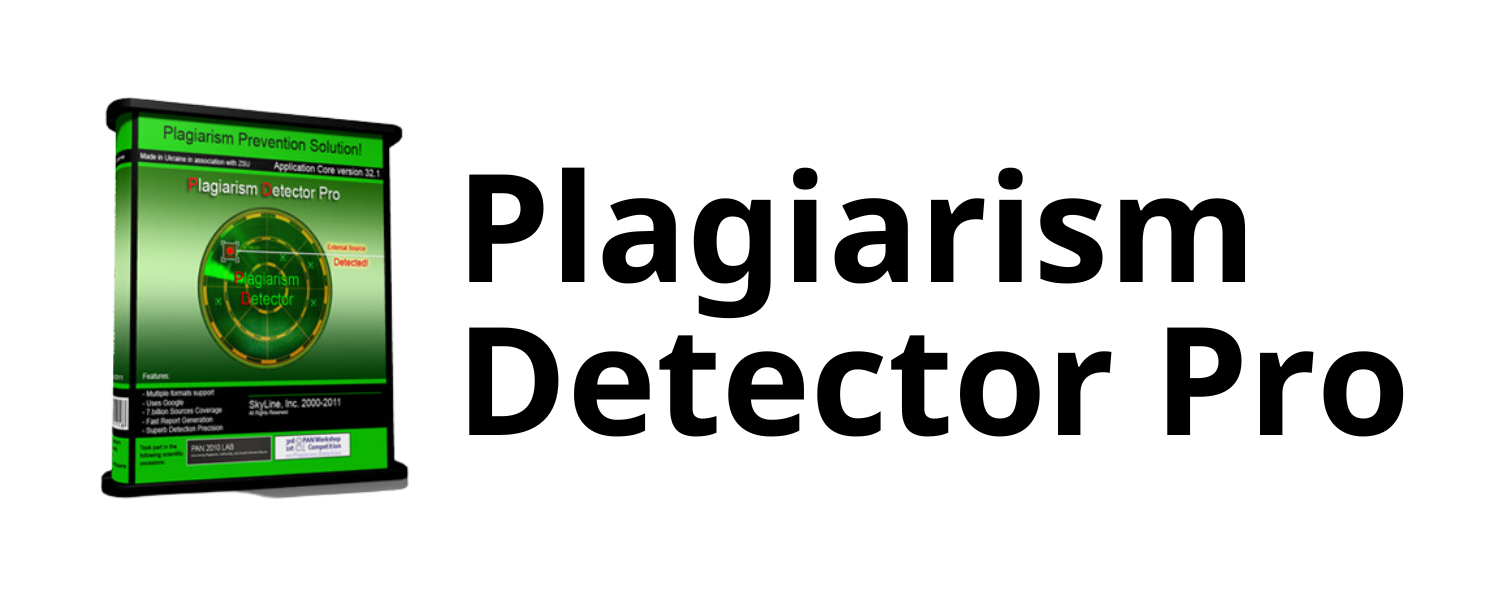Feasibility Study of Snail Farming in Indonesia
DOI:
https://doi.org/10.58812/wsshs.v2i10.1374Keywords:
Snail Cultivation, Economic Feasibility, Market Demand, Cultivation Technology, Environmental ConditionsAbstract
This study evaluates the economic feasibility of snail cultivation in Indonesia by analyzing the impact of market demand, cultivation technology, and environmental conditions. A quantitative approach was employed, surveying 150 respondents using a Likert scale (1-5), with data analyzed via SPSS version 26. The results reveal that market demand is the most significant factor influencing economic feasibility, followed by cultivation technology and environmental conditions. All three variables positively and significantly affect the viability of snail farming. These findings suggest that increasing market demand, adopting modern farming technologies, and maintaining favorable environmental conditions are essential for promoting snail cultivation in Indonesia. This study provides valuable insights for policymakers, investors, and farmers interested in developing snail farming as a sustainable agricultural business.
References
K. Apostolou, D. Klaoudatos, A. Staikou, S. Sotiraki, and M. Hatziioannou, “Evaluation of production performance between two heliciculture farming systems,” Molluscan Res., vol. 43, no. 3–4, pp. 211–221, 2023.
I. S. Danilova, “Heliceculture as a new promising direction of agriculture in Ukraine,” Sci. Messenger LNU Vet. Med. Biotechnol. Ser. Agric. Sci., vol. 24, no. 97, pp. 44–47, 2022.
А. Yatsun, “Instrumentation of regulation in the aspect of snail breeding in Spain and its impact on the country’s economy,” Econ. Bus. Manag., vol. 1, no. 14, pp. 90–108, 2023.
G. N. Munywoki, “Snail farming (Heliciculture): Benefits, economic viability, challenges and prospects,” Int. J. Res. Agron., vol. 5, no. 1, pp. 9–11, 2022.
V. V Golembovskii, L. A. Pashkova, A. I. Surov, and S. A. Talalaev, “A new product from Helix pomatia and the method of its production,” in E3S Web of Conferences, EDP Sciences, 2023, p. 1017.
Y. Popoola, A. Idowu, I. Omodewu, O. Ajayi, S. Ajayi, and A. deboy. Omole, “Effects and Cost-Benefit of Low and High Protein Levels in Snail Diets with Constant Levels of Energy and Calcium,” Asian J. Res. Agric. For., vol. 9, pp. 36–41, May 2023, doi: 10.9734/ajraf/2023/v9i3204.
I. L. Sari, “Sustainability of sucking snail (Cerithidea obtusa) in Tanah Merah, Indragiri Hilir Regency, Riau Province based on ecological and economic dimensions,” Econ. Manag. Soc. Sci. J., vol. 1, no. 3, pp. 81–90, 2022.
J. Pratiwi et al., “Feeding behavior and preferences of Hemiplecta humphreysiana and Lissachatina fulica (Gastropoda) to support heliciculture in Indonesia,” J. Biodjati, vol. 7, no. 2, pp. 163–176, 2022.
V. K. Dewi, R. Ramdhani, T. Suganda, L. T. Puspasari, and R. Meliansyah, “Kepadatan Populasi dan Pola Distribusi Keong Mas (Pomaceae canaliculta L.) pada Ekosistem Sawah di Kecamatan Jatinangor,” Soilrens, vol. 20, no. 2, pp. 103–111, 2022.
P. A. Nurhayati, A. S. Nurinsiyah, T. Atmowidi, and W. Priawandiputra, “Land snail assemblages along altitudinal gradients on Mount Semeru, the highest montane forest in Java, Indonesia,” J. Molluscan Stud., vol. 90, no. 3, 2024.
A. Dhamira and H. Anggrasari, “Indonesian Climatic Factors and Its Effect on Cocoa Productivity,” West Sci. Interdiscip. Stud., vol. 2, no. 05, pp. 963–974, 2024.
P. Hidayat, N. B. Adilah, and N. Maryana, “Review of species, host plants, and distribution of fruit flies (Diptera: Tephritidae) in Indonesia,” in IOP Conference Series: Earth and Environmental Science, IOP Publishing, 2023, p. 12018.
J. Widjaja, A. N. Widawati, A. Nursafingi, A. Kurniawan, and H. U. Pangaribuan, “The Impact of Snail Control on Intestinal Schistosomiasis Endemic Areas in Indonesia,” J. Commun. Dis. (E-ISSN 2581-351X P-ISSN 0019-5138), vol. 55, no. 3 B, pp. 14–20, 2023.
S. A. P. Pradina and P. C. Makatipu, “Spawning and seed production of the green snail (Turbo marmoratus L.) in Indonesia,” Secr. Pacific Community Trochus Inf. Bull., vol. 7, pp. 9–13, 2001.
W. Wiratno, M. Rizal, and I. W. Laba, “Potensi ekstrak tanaman obat dan aromatik sebagai pengendali keong mas,” Bul. Penelit. Tanam. Rempah dan Obat, vol. 22, no. 1, 2015.
P. Rahayu, N. Istiqomah, and F. Adriani, “Uji Efektivitas Alih Fungsi Perangkap Ikan Model Bubu Menjadi Perangkap Hama Keong Mas (Pomacea canaliculata L.) dengan Berbagai Atraktan Biologi,” Rawa Sains J. Sains STIPER Amuntai, vol. 8, no. 2, pp. 98–103, 2018.
Y. Perehuda, “Assessment of the competitiveness of manufacturing products of snail and fish farms through the prism of import and export indicators,” Ukr. J. Appl. Econ. Technol., vol. 8, pp. 125–130, Aug. 2023, doi: 10.36887/2415-8453-2023-3-18.
E. Raji, T. I. Ijomah, and O. G. Eyieyien, “Integrating technology, market strategies, and strategic management in agricultural economics for enhanced productivity,” Int. J. Manag. Entrep. Res., vol. 6, no. 7, pp. 2112–2124, 2024.
A. S. Modjo, G. Hidayat, A. Manardi, F. Muhammad, and D. Fitriani, “Harnessing Technology for Agricultural Sustainability: Case Studies and Future Directions,” Join J. Soc. Sci., vol. 1, no. 3, pp. 270–280, 2024.
R. C. Bunkar et al., “A Review on Levering Technology for Sustainable Development in Agricultural Extension Program,” Arch. Curr. Res. Int., vol. 24, no. 5, pp. 543–556, 2024.
V. Sharma, S. Rajawat, A. Kumar, V. Kumar, Y. Parihar, and S. Jaat, “A Review On: Advancing Sustainable and Smart Farming Practices, A Comprehensive Exploration of IoT and Sensor Technologies in Agriculture,” Int. J. Adv. Res. Sci. Commun. Technol., pp. 407–412, Jul. 2024, doi: 10.48175/IJARSCT-19152.
W. M. Anthony, “Innovations in Aquaculture Technology and Market Access in Sub-Saharan Africa,” Iaa J. Art Humanit., vol. 11, no. 2, pp. 49–52, 2024, doi: 10.59298/iaajah/2024/11.4952.33.
D. Jimenez and R. del Pilar, “Manejo controlado de la temperatura y humedad en caracoles de tierra de la especie Helix aspersa en el municipio de Fusagasugá (Cundinamarca),” 2007.
P. Koperski, E. Dumnicka, and J. Galas, “Abiotic parameters determining fauna composition in karstic springs,” Polish J. Ecol., vol. 59, no. 1, pp. 153–163, 2011.
M. Ilman et al., “Impact of soil and water quality on the sustainable management of mangrove-compatible brackishwater aquaculture practices in Indonesia,” Environ. Res. Commun., vol. 6, no. 8, p. 85013, 2024.
M. Riftiarrasyid and B. Soewito, “Monitoring water quality parameters impacted by Indonesia’s weather using internet of things,” Indones. J. Electr. Eng. Comput. Sci., vol. 35, p. 1426, Sep. 2024, doi: 10.11591/ijeecs.v35.i3.pp1426-1436.
Y. M. Xu and S. Q. Zhang, “The influence of environmental factors on snail growth and distribution,” Int J Medi Parasit Dis, vol. 38, pp. 218–222, 2011.
Z. Pramudia et al., “Profitability Analysis and Sensitivity Level of White Shrimp (Litopenaeus vannamei) Cultivation Using the Millennial Shrimp Farming (MSF) System,” ECSOFiM (Economic Soc. Fish. Mar. Journal), vol. 11, no. 2, pp. 155–165, 2024.
M. M. Beg, S. M. Roy, S. Moulick, B. Mandal, T. Kim, and B. C. Mal, “Economic feasibility study of organic and conventional fish farming systems of Indian major carps,” Sci. Rep., vol. 14, no. 1, p. 7001, 2024.
M. A. Kharoub, A. Saied Ali El Shafei, and R. El-Sayed Mohamed Morsi, “The Economic Feasibility of Establishing a laying Hens Breeding Station for the Production of Table Eggs,” Alexandria Sci. Exch. J., vol. 45, no. 1, pp. 115–129, 2024.
I. Ghozali, “Multivariate Analysis Application with the IBM SPSS 25 Program. Semarang,” Semarang Diponegoro Univ. Publ. Agency, 2018.
T. Mulyadi and S. P. Sari, “Pemanfaatan siput gonggong sebagai bahan baku olahan sosis sebagai makanan khas Kota Batam,” J. Manaj. Kuliner, vol. 1, no. 2, pp. 78–86, 2022.
N. Ningsi et al., “Pengetahuan dan Perspektif Masyarakat Lokal Terhadap Schistosomiasis di Indonesia,” J. Vektor Penyakit, vol. 16, no. 2, pp. 153–162, 2022.
N. M. Suartini and N. W. Sudatri, “Distribution, eggs number and nutrition content of pila scutata snail in rice fields of Subak Uma Desa, Duda village-Bali,” Int. J. Fauna Biol. Stud., vol. 9, no. 5, pp. 19–22, 2022.
A. Zainudin, A. Habibullah, Y. Arfiani, and S. D. Mumpuni, “Digital Transformation on Aquaculture in Indonesia through eFishery,” in IOP Conference Series: Earth and Environmental Science, IOP Publishing, 2023, p. 12024.
I. G. W. D. S. Permadi and R. Novita, “The Role of Appropriate Technology in Enhancing Efficiency and Production in Livestock and Agriculture Sectors: A Systematic Review in Indonesia,” Indones. J. Innov. Stud., vol. 23, pp. 10–21070, 2023.
V. A. Glavatchuk and H. M. Ogorodnichuk, “Influence of cellulolytic preparation on the productive qualities of snails of the Helix Aspersa Maxima species,” ТЕХНОЛОГІЯ ВИРОБНИЦТВА І ПЕРЕРОБКИ ПРОДУКЦІЇ ТВАРИННИЦТВА, p. 89, 2024.
L. A. Oyesola, L. A. Adejumo, M. O. Jimoh, and B. O. Solomon, “Optimization of the effects of process parameters on nutritional and microbial qualities of canned snail meat using Taguchi method,” LAUTECH J. Eng. Technol., pp. 65–79, 2024.
S. Jaishi, R. B. Thapa, K. Kafle, U. Sapkota, and D. Khanal, “Prevalence of Snails and Farmers’ Practice Towards the Management of Giant African Snail, Achatina fulica Bowdich, 1822 in Kapilvastu, Nepal,” Agric. Dev. J., pp. 68–77, 2024.
E. Kulikova and E. Molokova, “Leveraging market insights for sustainable agricultural practices,” in BIO Web of Conferences, EDP Sciences, 2024, p. 2011.
A. Musagaliev and M. Dustova, “Fertile grounds: econometric analysis of financial support for agricultural enterprises,” in BIO Web of Conferences, EDP Sciences, 2023, p. 14012.
V. Amrahov, F. Rahimli, N. Mirzazadeh, G. Ibrahimova, and H. Valizadeh, “Satisfying the consumer demand for agricultural products: Possibilities and its prediction,” 2023.
V. Kyfyak, V. Kindzerskyi, S. Todoriuk, L. Klevchik, and O. Luste, “The role of economics and management in the development of sustainable business models of agricultural enterprises,” 2024.
S. Sehgal and I. Batool, “Economic Development: A Study of the Holistic Examination of Sustainable Agriculture’s Substantial Impact on Developing Nations,” South Asian J. Soc. Stud. Econ., vol. 21, pp. 241–248, Jul. 2024, doi: 10.9734/sajsse/2024/v21i7858.
Downloads
Published
Issue
Section
License
Copyright (c) 2024 Haryono Haryono

This work is licensed under a Creative Commons Attribution-ShareAlike 4.0 International License.




















 Instagram
Instagram 